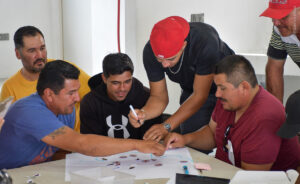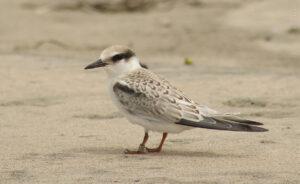On the coast of Navolato, Angostura and Guasave municipalities, in the state of Sinaloa, lies a natural landscape like no other. We are talking about Bahía de Santa María La Reforma, a magnificent system of islands, islets and coastal dunes, with over 67,000 hectares, out of which 53,000 correspond to wetlands. There are also about 2,000 hectares of mangroves and estuaries rich in sea grasses and low vegetation, which is very suitable for a large number of animals.
Bahía de Santa María offers innumerable ecosystem services to the environment and its population. Since 2009, UNESCO added it to the RAMSAR list of wetlands and coasts considered to be of high ecological relevance for the planet.
Bahía Santa María is limited by the municipal boundary of Angostura, as well the limits of Guasave and Navolato; to the south and north, by the limits of the hydrological basins of the Culiacan River and Mocorito River. It has a wide range of national and international conservation designations, since it has an Area Voluntarily Designated for Conservation (ADVC) and is located in the Flora and Fauna Protection Area (APFF, in spanish) Gulf of California Islands. It is also considered a priority wetland by CONABIO, a natural World Heritage site and UNESCO Biosphere Reserve, and an Important Bird Conservation Area.

However, this natural treasure has not been excluded from facing critical situations. In addition to latent threats for any coastal ecosystem, such as urban growth, exploitation of natural resources, and the ravages of climate change, there is also a problem derived from land use permits. In recent years, changes in land use have been issued, mainly for aquaculture activities, with a growth rate of more than 26,000 hectares, putting this ecosystem and its wildlife at risk.
Another risk factor is the volume of polluted water flowing from the Cedritos Drain, a 46-kilometer waterway that carries waste from industry, agriculture, housing, and wastewater treatment plants from several towns in Sinaloa. In addition, there is also a project to develop an ammonia plant that would cause potential damage to the bay’s ecosystem.
This complex situation forces us to undertake conservation tasks taking into account not only wetlands, the coast and waters of the bay, but also the tributaries that feed it, such as the Culiacan River and the Mocorito River.
Another key aspect revealing the strategic importance of Bahía de Santa María for the region’s ecology is that its wetlands are considered in the annual monitoring of migratory birds carried out throughout North America. This is a clear sign that the conditions in which a wetland is found has a direct impact on the continental transit and the reproductive cycle of millions of migratory birds.
Among the species that inhabit this site are the River Crocodile (Crocodylus acutus) and the Green Iguana (Iguana iguana), both subject to special protection under the Mexican Official Standard NOM-059-SEMARNAT-2010. As for shorebirds, we can mention the Thick-billed Plover (Charadrius wilsonia), the Western Sandpiper (Calidris mauri) and the Ruddy-headed Plover (Limosa fedoa).
Records show the existence of 103 species of terrestrial birds corresponding to 77 genera and 31 families. These represent about 20% of all reported bird species in Sinaloa, estimated at 552 species, as well as 27% of the terrestrial species, which total up to 388 (Lepage, 2021). The most representative animal families in terms of the number of species are the Skimmers and Sparrows (Passerellidae), Warblers, Mascaritas, Parulas and Little Turkeys (Parulidae), Tyrants and Flycatchers (Tyrannidae).
An important fact is that about half of the species recorded are considered migratory and are observed only during certain seasons of the year. Of the total number of species recorded in Bahía de Santa María, six are under some category of risk according to NOM-059-SEMARNAT-2010.
Join us in the fascinating and urgent task of conserving Bahía de Santa María.
















